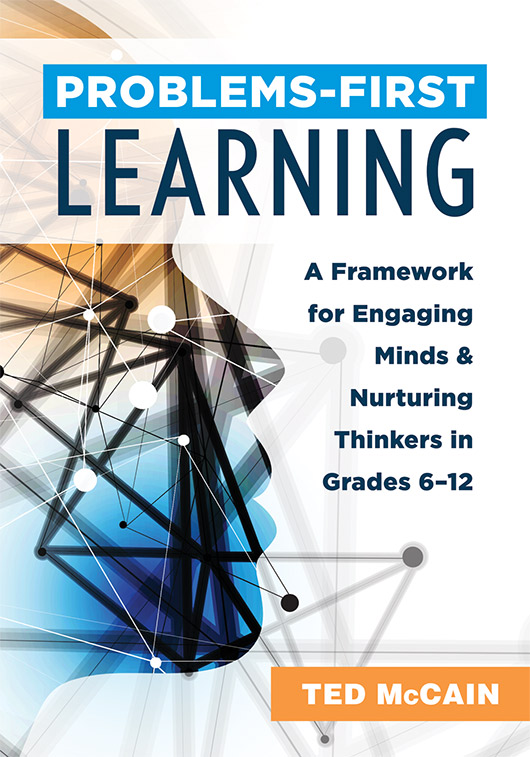Free Reproducibles
Problems-First Learning
Fully engage students by first introducing a problem and then empowering learners to solve it using creativity, innovation, collaboration, and other essential skills. Gain instructional methods that foster whole-mind learning, boost student engagement, and prepare learners for the modern workforce with 21st century skills.
Benefits
- Identify the need for instructional change in the current educational system.
- Consider the transferrable skills students need for solving problems in the workplace and in life outside the classroom.
- Study the benefits of a problems-first teaching style.
- Learn to implement problems-first methods into existing classrooms.
- Understand how this method teaches seven essential 21st century skills highly desired in the modern workforce.
- Discover how to introduce role-play into the classroom and broaden lessons to encompass whole-mind learning and boost student engagement.
TABLE OF CONTENTS
Part One: Understanding New Needs and a New Approach for a Digital Generation
Chapter 1: The New Needs of a Changing Generation
Chapter 2: The Thinking and Processing Skills Students Need for the Future
Chapter 3: The Key to a New Approach
Part Two: Learning How to Create Problems-First Projects
Chapter 4: Envision a New Role for the Teacher
Chapter 5: Ensure That Problems Are First and Teaching Is Second
Chapter 6: Establish a Real-World Link Using Role-Play
Chapter 7: Equip Students With the Four Ds of Problem Solving
Chapter 8: Expand Your View of the Curriculum
Chapter 9: Elevate the Students’ Level of Thought
Chapter 10: Educate the Whole Mind
Chapter 11: Evaluate Holistically
Chapter 12: Ease Yourself Out of the Picture
Part Three: Making the Shift to Problems-First Teaching
Chapter 13: Pointers for Shifting to a Problems-First Approach
Chapter 14: Examples of Problems-First Lesson Plans
STUDY GUIDE
PRINTABLE REPRODUCIBLES
- Figure 7.3: The Solution Design Form
- Figure 7.6: The Complete Four D Process
- Figure 11.1: A Performance Assessment Form With Simplified Assessment Criteria
- Figure 13.1: The Problems-First Project Planning Flowchart
SUGGESTED RESOURCES
Books
- McNeece, A. (2020). Loving what they learn. Bloomington, IN: Solution Tree Press.
- Reeves, D., & Reeves, B. (2017). The myth of the muse: Supporting virtues that inspire creativity. Bloomington, IN: Solution Tree Press.

